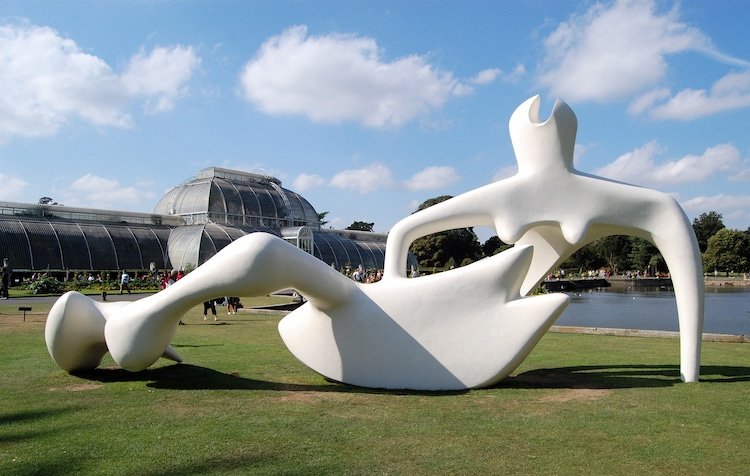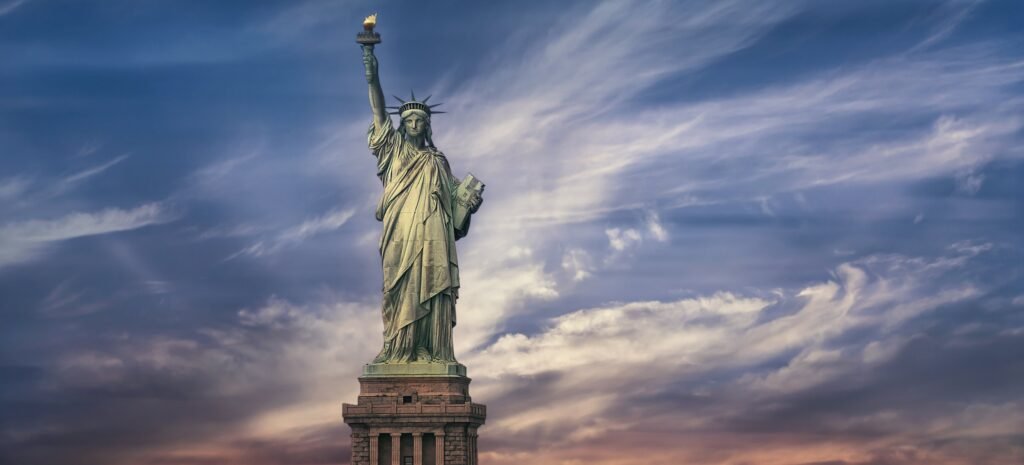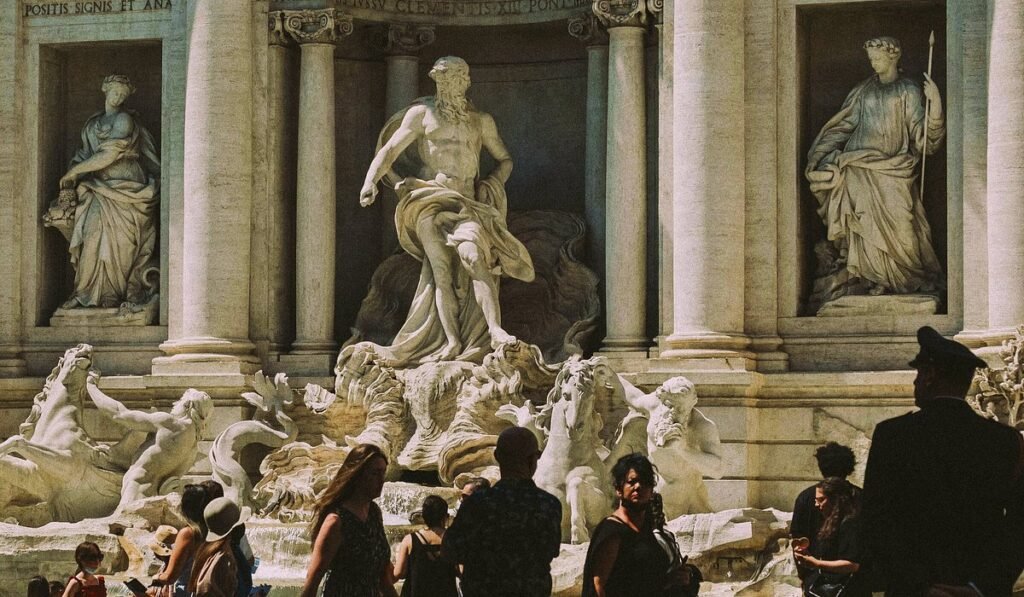Sculpture, an ancient art form that has captivated the human imagination for millennia. Which is a powerful medium of expression that transcends the boundaries of time and culture. Through the skillful manipulation of materials, sculptors have the ability to transform the tangible into the sublim. Creating works that evoke emotions, convey ideas, and leave an indelible mark on the collective consciousness.
From the towering monuments of ancient civilizations to the delicate, intricate pieces of modern masters. The art of sculpture has evolved and diversified, showcasing the boundless creativity and technical prowess of the human spirit. Whether carved from stone, molded from clay, or cast in metal, each sculpture is a unique expression of the artist’s vision. A testament to the power of the human hand and the imagination.

History of Sculpture
The origins of sculpture can be traced back to the earliest human civilizations. Where early forms of the art were used for practical and ceremonial purposes. The earliest known examples of sculpture date back to the Paleolithic era. With the discovery of small figurines and carvings that served as religious or symbolic objects.
As human societies progressed, the art of sculpture evolved, reflecting the cultural, social, and technological advancements of each era. The ancient Egyptians, Greeks, and Romans were renowned for their monumental sculptures, which often depicted deities, rulers, and historical events. The Middle Ages saw the rise of religious sculpture, with cathedrals and churches adorned with intricate carvings and statues.
During the Renaissance, sculpture experienced a resurgence, with artists like Michelangelo and Bernini. Creating masterpieces that pushed the boundaries of the medium. The 19th and 20th centuries saw the emergence of modern and contemporary sculpture. With artists exploring new materials, techniques, and conceptual approaches to the art form.
Different Types of Sculpture
Sculpture can be categorized into various forms, each with its unique characteristics and artistic expression. Some of the most common types of sculpture include:
- Freestanding Sculpture: Sculptures that are self-supporting and can be viewed from all sides, such as statues and monuments.
- Relief Sculpture: Sculptures that project from a flat surface, creating the illusion of depth and dimension.
- Kinetic Sculpture: Sculptures that incorporate movement, either through mechanical means or the interaction with the viewer.
- Assemblage Sculpture: Sculptures created by combining found or everyday objects, often with a conceptual or symbolic meaning.
- Figurative Sculpture: Sculptures that depict the human form, often in a realistic or stylized manner.
- Abstract Sculpture: Sculptures that focus on the formal elements of art. Such as shape, form, and texture, rather than realistic representation.
Each type of sculpture offers its own unique challenges and opportunities for artistic expression. Allowing sculptors to explore a wide range of themes, ideas, and creative approaches.

Famous Sculptures Around the World
Throughout history, the art of sculpture has produced some of the most iconic and recognizable works of art. From the towering monuments of ancient civilizations to the intricate, avant-garde pieces of modern masters. The world is home to a rich tapestry of sculptural masterpieces.
Some of the most famous sculptures in the world include:
- The Statue of David by Michelangelo, a colossal marble sculpture depicting the biblical hero in a moment of contemplation.
- The Thinker by Auguste Rodin, a bronze sculpture that captures the essence of human contemplation and introspection.
- The Terracotta Army of Qin Shi Huang, a vast collection of life-size clay soldiers and horses created to protect the first emperor of China in the afterlife.
- The Statue of Liberty by Frédéric Auguste Bartholdi, a colossal copper statue symbolizing the ideals of freedom and democracy.
- The Persistence of Memory by Salvador Dalí, a surrealist sculpture that features the iconic melting clocks.Cchallenging the viewer’s perception of time and reality.
These are just a few examples of the countless masterpieces that have captivated and inspired audiences around the world. Each one a testament to the enduring power and versatility of the art of sculpture.

The Process of Creating a Sculpture
The creation of a sculpture is a complex and multifaceted process that requires a deep understanding of materials, techniques, and artistic vision. Sculptors must possess a range of skills, from technical proficiency to creative imagination, to bring their ideas to life.
The process typically begins with the conceptualization of the sculpture. Where the artist develops the initial idea and sketches out a plan for the final work. This may involve research, experimentation with materials, and the exploration of various techniques and styles.
Once the concept is solidified, the sculptor may create a small-scale model or maquette to refine the design and work out any technical challenges. This serves as a guide for the creation of the final sculpture. Which may be carved, modeled, or cast, depending on the chosen medium.
The actual creation of the sculpture can be a laborious and time-consuming process. Often requiring the use of specialized tools and equipment. Sculptors may employ techniques such as carving, modeling, casting, or assemblage. Depending on the desired outcome and the properties of the chosen material.
Throughout the process, the sculptor must carefully consider the balance, proportion, and visual impact of the sculpture. Constantly refining and adjusting the work to achieve the desired aesthetic and conceptual expression.
Tools and Techniques Used in Sculpture
The art of sculpture is a highly technical and specialized field. Requiring the mastery of a wide range of tools and techniques. From the traditional chisels and hammers used in stone carving to the advanced computer-aided design (CAD) software employed in modern sculpture. The tools and techniques of the sculptor’s craft are as diverse as the works they create.
Some of the most common tools and techniques used in sculpture include:
- Carving: The process of removing material, such as stone, wood, or ice, to create a sculpture.
- Modeling: The process of shaping and manipulating a malleable material, such as clay or wax, to create a sculpture.
- Casting: The process of pouring a liquid material, such as bronze or resin, into a mold to create a sculpture.
- Welding: The process of joining metal pieces together to create a sculpture. Often used in the creation of abstract or kinetic works.
- Assemblage: The process of combining found or everyday objects to create a sculpture, often with a conceptual or symbolic meaning.
- Computer-Aided Design (CAD): The use of specialized software to design and visualize a sculpture before its physical creation.
Each of these tools and techniques requires a unique set of skills and knowledge, and sculptors must often master a combination of them to bring their artistic visions to life.

The Significance of Sculpture in Art
Sculpture, as an art form, holds a unique and profound significance within the broader context of artistic expression. Beyond its aesthetic appeal, sculpture possesses the power to convey ideas, evoke emotions, and shape the cultural and social landscape.
One of the primary roles of sculpture is its ability to serve as a physical manifestation of cultural, religious, or political ideals. From the towering monuments of ancient civilizations to the contemporary works that challenge societal norms. Sculpture has the capacity to commemorate, celebrate, and critique the human experience.
Moreover, sculpture can be a powerful tool for storytelling, allowing artists to capture and preserve moments in time, immortalizing historical events, mythological narratives, or personal experiences. The three-dimensional nature of sculpture enables artists to create immersive, sensory experiences that engage the viewer on a deeper level, inviting them to interact with the work and interpret its meaning.
Sculpture also plays a crucial role in the evolution of artistic expression. As sculptors continually push the boundaries of the medium, experimenting with new materials, techniques, and conceptual approaches. This constant innovation and exploration have led to the development of diverse sculptural styles and movements. From the classical realism of the Renaissance to the avant-garde abstractions of the modern era.
Sculpture as a Form of Expression
Sculpture, as an art form, is a powerful means of personal and cultural expression. Allowing artists to convey their unique perspectives, emotions, and ideas through the manipulation of physical materials.
For many sculptors, the creative process is a deeply personal and introspective journey. One in which they grapple with the complexities of the human experience and seek to translate these into tangible, three-dimensional forms. Whether exploring themes of identity, social justice, or the natural world, sculptors use their medium as a tool for self-reflection, social commentary, and the exploration of the human condition.
The physical act of sculpting itself can be a profoundly expressive experience, as the artist’s hands shape and mold the material, imbuing it with their own unique energy and artistic vision. The resulting sculpture becomes a physical manifestation of the artist’s inner world, a window into their creative process and the emotional or conceptual underpinnings of their work.
Moreover, sculpture’s capacity for public display and interaction allows artists to engage with a wider audience, inviting them to interpret and respond to the work in their own unique ways. This dynamic exchange between the artist, the sculpture, and the viewer is a crucial aspect of the art form, as it allows for the exploration of universal themes and the fostering of meaningful dialogues within the broader cultural landscape.
Sculpture in Modern Times
In the ever-evolving landscape of contemporary art, sculpture has continued to maintain its relevance and importance, adapting to the changing social, technological, and cultural currents of the modern era.
The 20th and 21st centuries have witnessed a remarkable diversification of sculptural practices, with artists exploring a wide range of materials, techniques, and conceptual approaches to the medium. From the found-object assemblages of the Dadaists to the minimalist, site-specific installations of the Land Art movement, modern sculptors have challenged traditional notions of what constitutes a sculpture, expanding the boundaries of the art form and pushing it into new, innovative directions.
Advancements in technology have also had a profound impact on the world of sculpture, with the integration of digital tools and computer-aided design (CAD) software allowing artists to create works of unprecedented complexity and precision. 3D printing, in particular, has emerged as a transformative technology, enabling sculptors to realize their visions with greater flexibility and efficiency than ever before.
At the same time, the role of sculpture in the public sphere has continued to evolve, with artists and communities collaborating to create site-specific works that engage with the local environment and address societal issues. These public sculptures, often situated in urban spaces or natural settings, serve as catalysts for community dialogue, fostering a deeper appreciation for the art form and its capacity to shape the cultural landscape.
The Enduring Beauty of Sculpture
The art of sculpture, with its rich history, diverse forms, and enduring significance, remains a testament to the boundless creativity and technical prowess of the human spirit. From the towering monuments of ancient civilizations to the avant-garde works of modern masters, the sculptural medium has the power to captivate, inspire, and challenge audiences across the globe.
As the world continues to evolve, the art of sculpture will undoubtedly continue to adapt and transform, reflecting the changing social, cultural, and technological currents of the times. Yet, at its core, sculpture will always remain a vital and irreplaceable form of artistic expression, a means of conveying the human experience in all its complexity and beauty. Discover the timeless allure of sculpture by exploring the works of renowned artists and visiting local galleries and museums. Immerse yourself in the tactile, three-dimensional world of this captivating art form and let it inspire your own creative journey.



